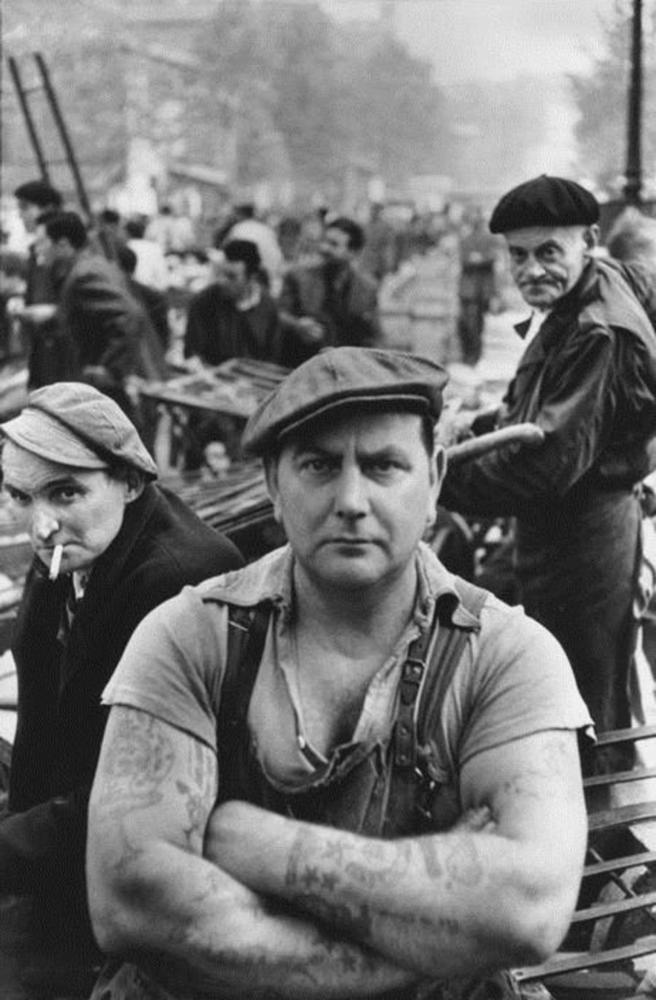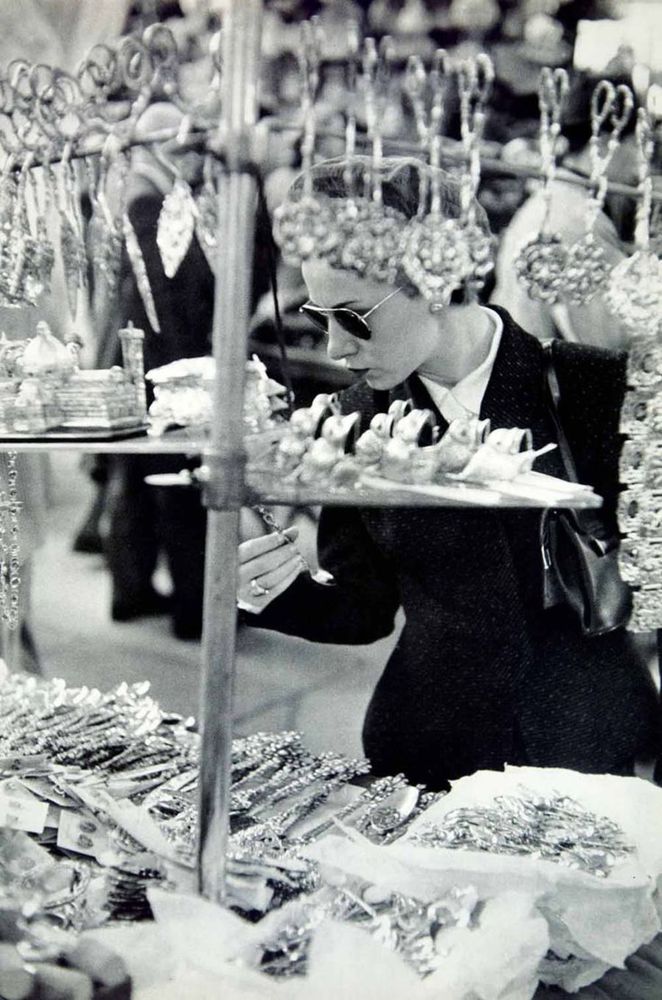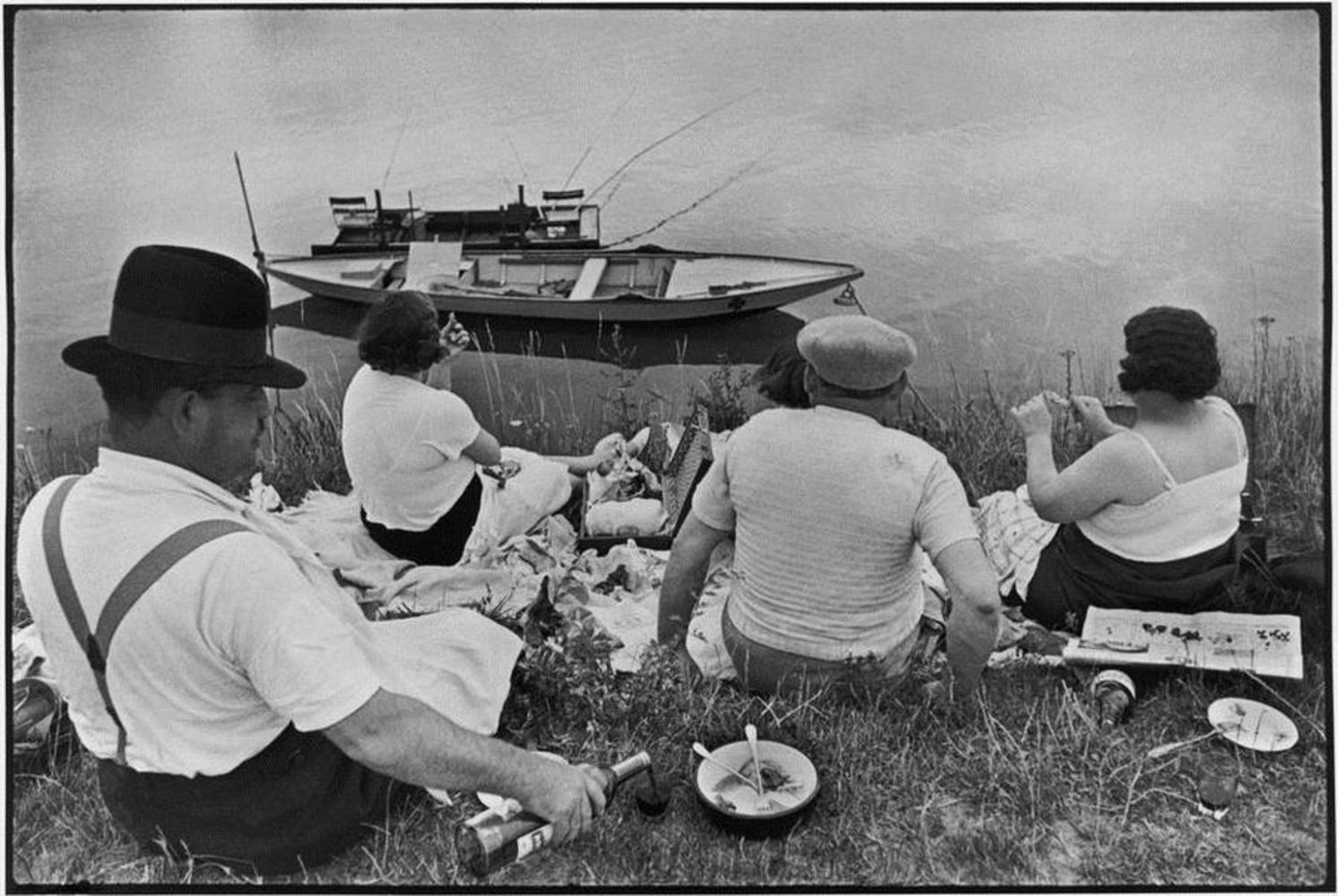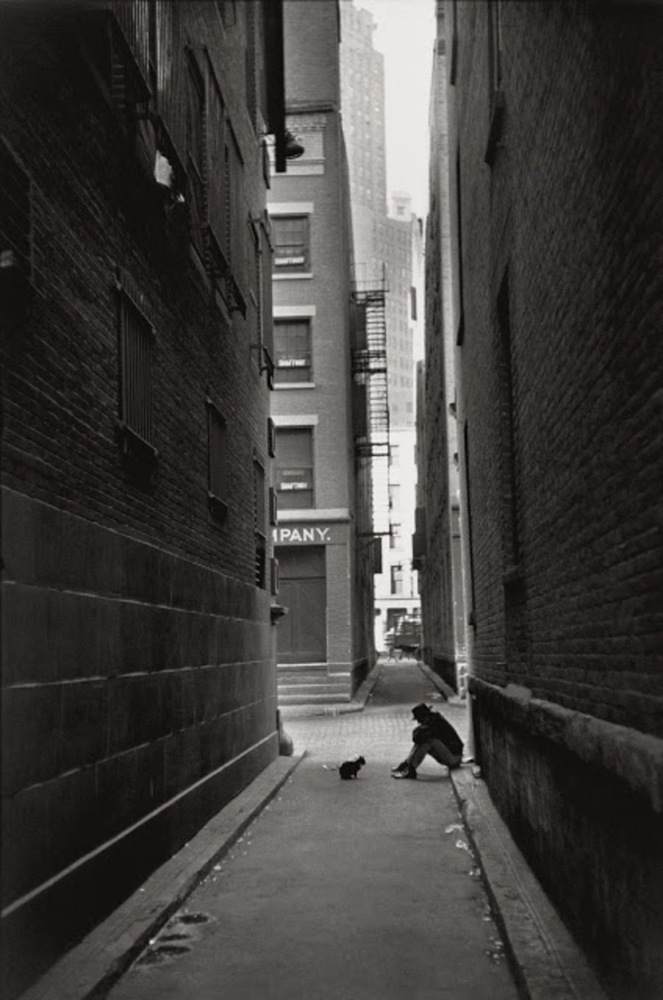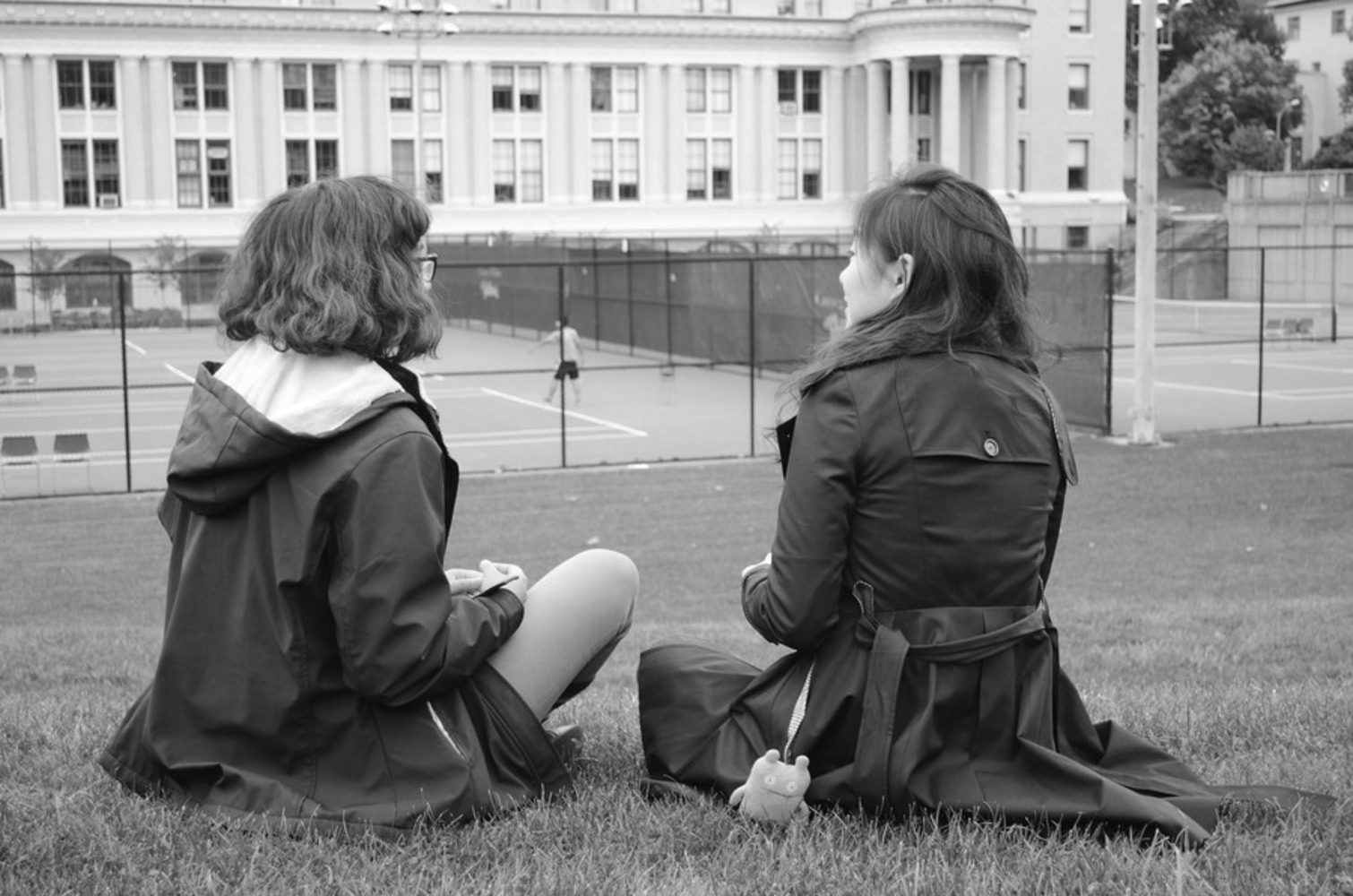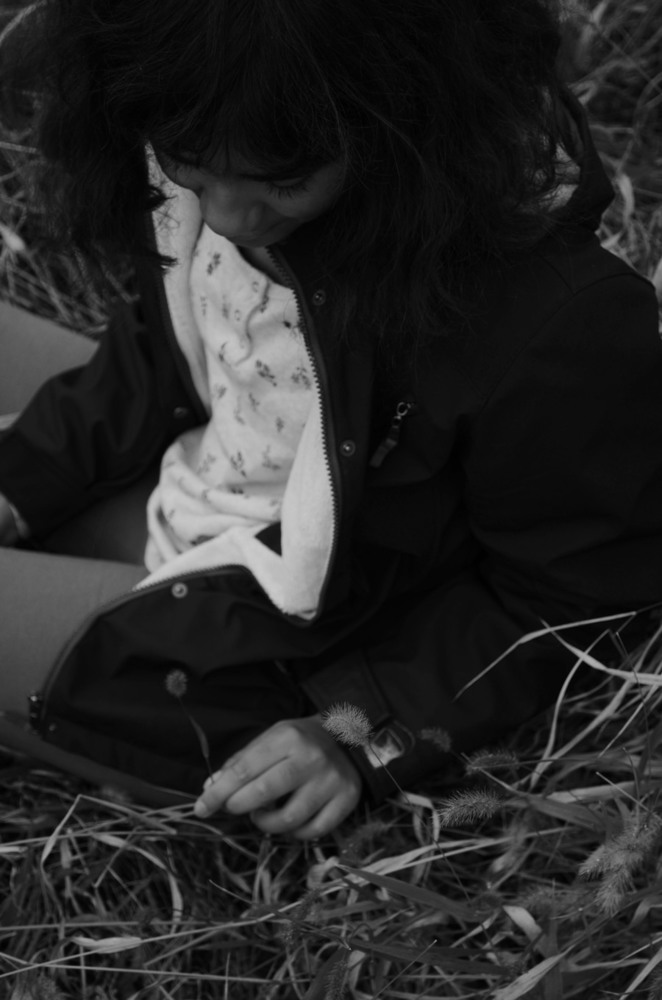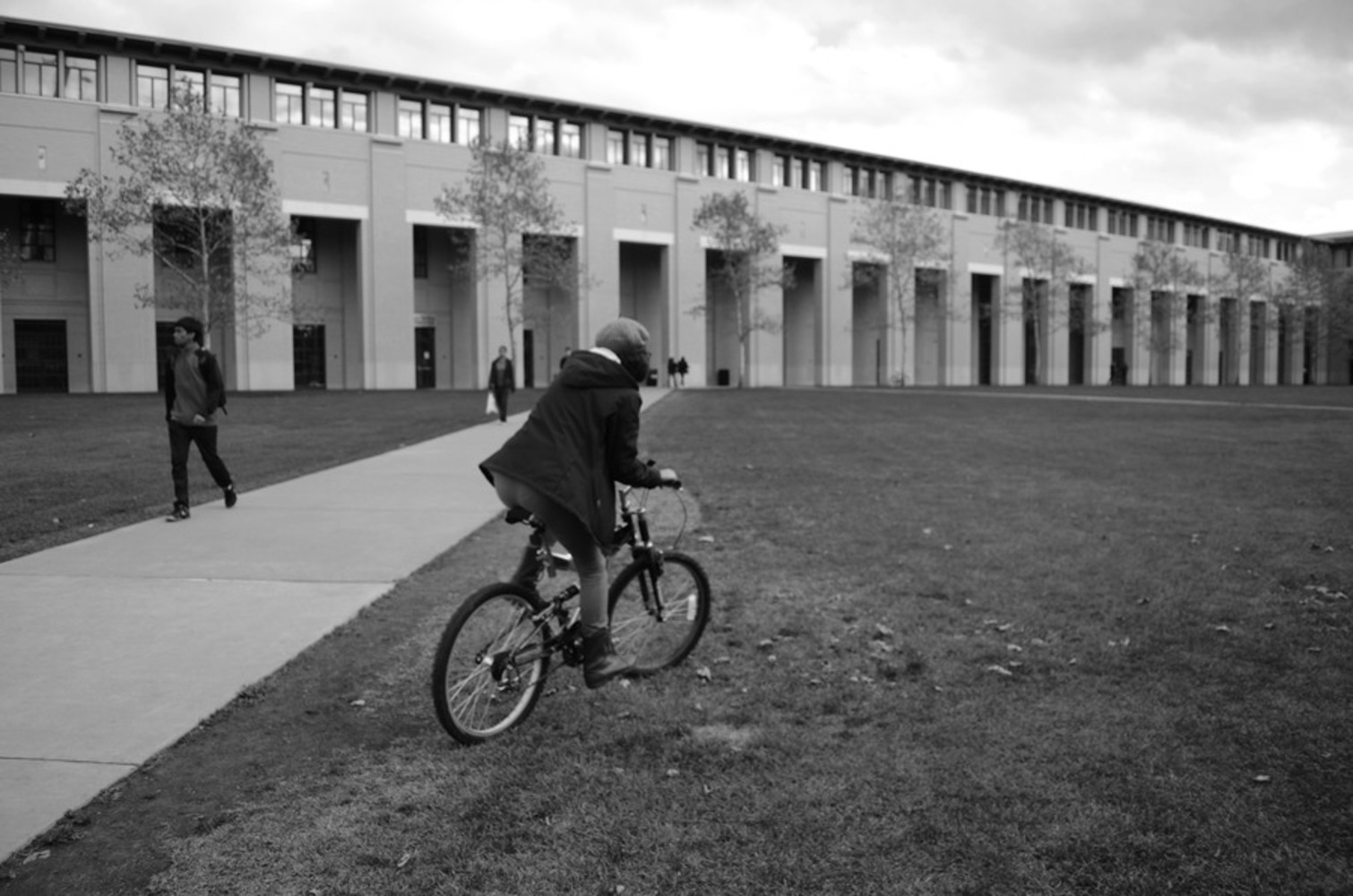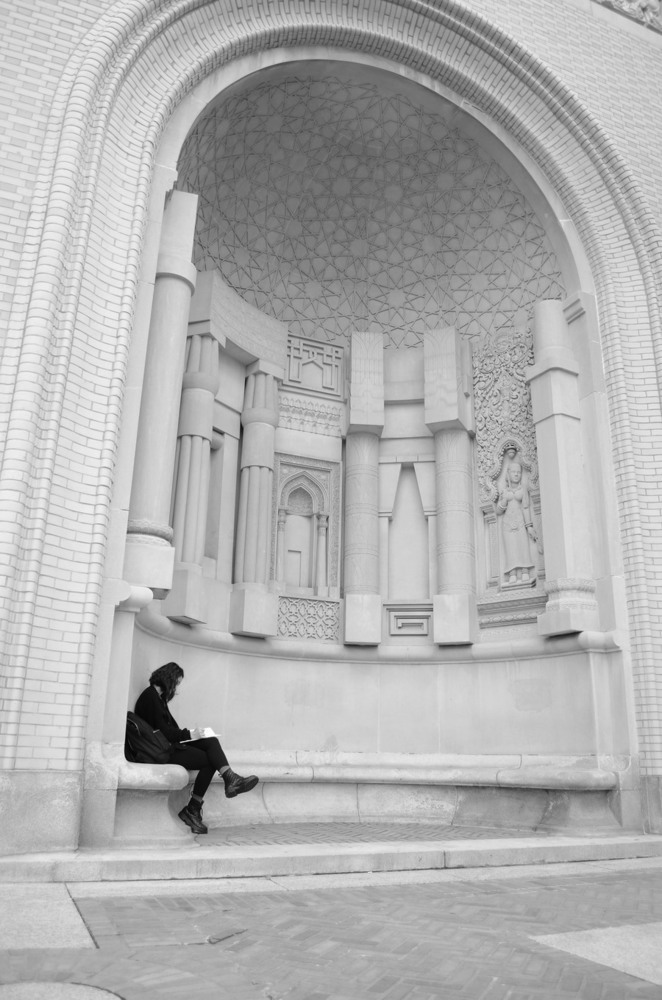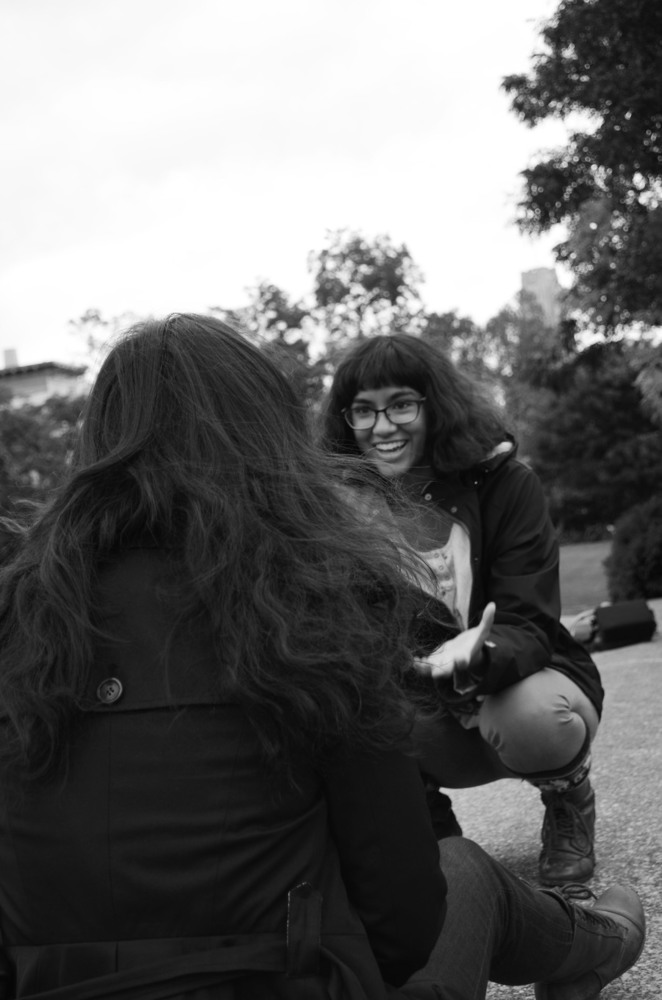In order to emulate Cartier’s style, I focused on trying to take photographs of people doing everyday activities. For the first couple of photographs, I took pictures of two people talking to each other as if they were unaware of the camera. To make sure I captured the “decisive moment” of the shot, I instructed them to talk and later took pictures while they were deep in conversation. This ensured that they were more focused on the topic of conversation rather than me taking photos of them.
The next photograph shows a person looking down at the plants and checking them for herself. I tried to imitate the “Shopping for Silverware” photograph by having one subject focused on another object and examining it. This resulted in a somewhat candid photograph capturing the interest of the subject on the plants.
The third photograph shows the same model biking around campus, which required a faster shutter speed and smaller aperture to sharpen both the person and the background. This increased depth of field gave a sense of motion to the picture. Having people walking around the background of the photograph was unintentional, but definitely aided in making this picture more candid and natural.
The fourth photograph shows a girl sitting at the CFA arches completely immersed in her work. This was another attempt at a candid shot, but now I tried to incorporate her surroundings to add contrast. The vastness of the arches compared to her created a dramatic frame and added more impactful composition. This photograph not only encompassed the candid photo but also made use of the backdrop. The arch was difficult to shoot as it required me to step further away, but resulted in a very drastic but beneficial contrast in the subject’s size to the building.
The last photograph features the same two models from the first, only now one of their faces are visible. Her emotion during her conversation with the other person is evident to the audience and invokes a stronger reaction. Her excitement with the topic of the conversation is clearly shown on her face. I had to wait a while until a significant emotion appeared on her face and I was prepared to take it.
I tried to stay consistent with Cartier's style by not editing any of the photographs that I took. He refused to use any darkroom manipulation and to accurately emulate his techniques I, too did the same.
